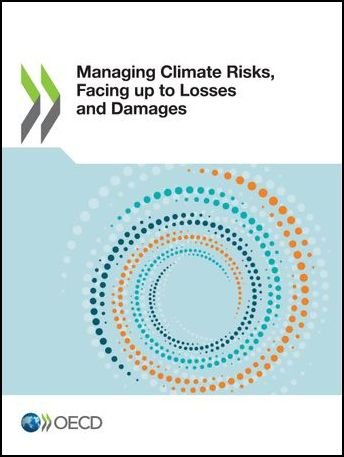 Read this article in French
Read this article in French- Share this article
- Subscribe to our newsletter
Managing Climate Risks, Facing up to Losses and Damages
According to the Managing Climate Risks, Facing up to Losses and Damages report, the risks of further climate-related impacts on economies, ecosystems, businesses and people are unavoidable and will increase as temperatures rise. The report was published by the Organization for Economic Cooperation and Development (OECD) in November 2021.
These risks derive from three types of climate hazards, each subject to uncertainties: increasingly frequent and extreme weather events; more gradual changes, such as rising sea levels; and the potentially dramatic global effects of crossing critical thresholds in the climate system. The risk of losses and damages depends not only on the hazards but also on the exposure and vulnerability of people, assets and ecosystems to those hazards.
The most effective way to mitigate future climate risks is to take immediate action in order to put the world on a path to net zero emissions by 2050.
At the same time, countries all over the world need to reduce their exposure and vulnerability to the risks of losses and damages from climate change without delay. Developed countries and large emitting emerging economies have a responsibility to take the lead in cutting emissions. Developed countries also have a responsibility to provide finance, technology and capacity building to help developing countries with the climate risks they face, the report says.
Among other recommendations, the report calls for more to be done at global level to monitor and study climate tipping points. It also highlights the importance of solidarity between countries.
The report argues that countries should take a comprehensive approach to risk management, using financial mechanisms to reduce, retain and transfer risk as well as finding ways to enable and encourage private actors to reduce and manage their own risks wherever possible. Furthermore, it is necessary to strengthen the global architecture for climate-risk and disaster-risk finance.
Developed countries should consider how climate risks affect the debt sustainability of developing countries that are repeatedly hit by natural disasters. When providing support, they must ensure that their actions do not add further pressure, particularly in least-developed countries and small island developing states.
Donor countries must also deliver on their commitments to provide financial support for climate action in developing countries. At the same time, they need to reflect on their approach to countries that are exposed to climate hazards but no longer eligible for Official Development Assistance (ODA).
(OECD/ile)
Read more and download the report at OECD website





Add a comment
Be the First to Comment